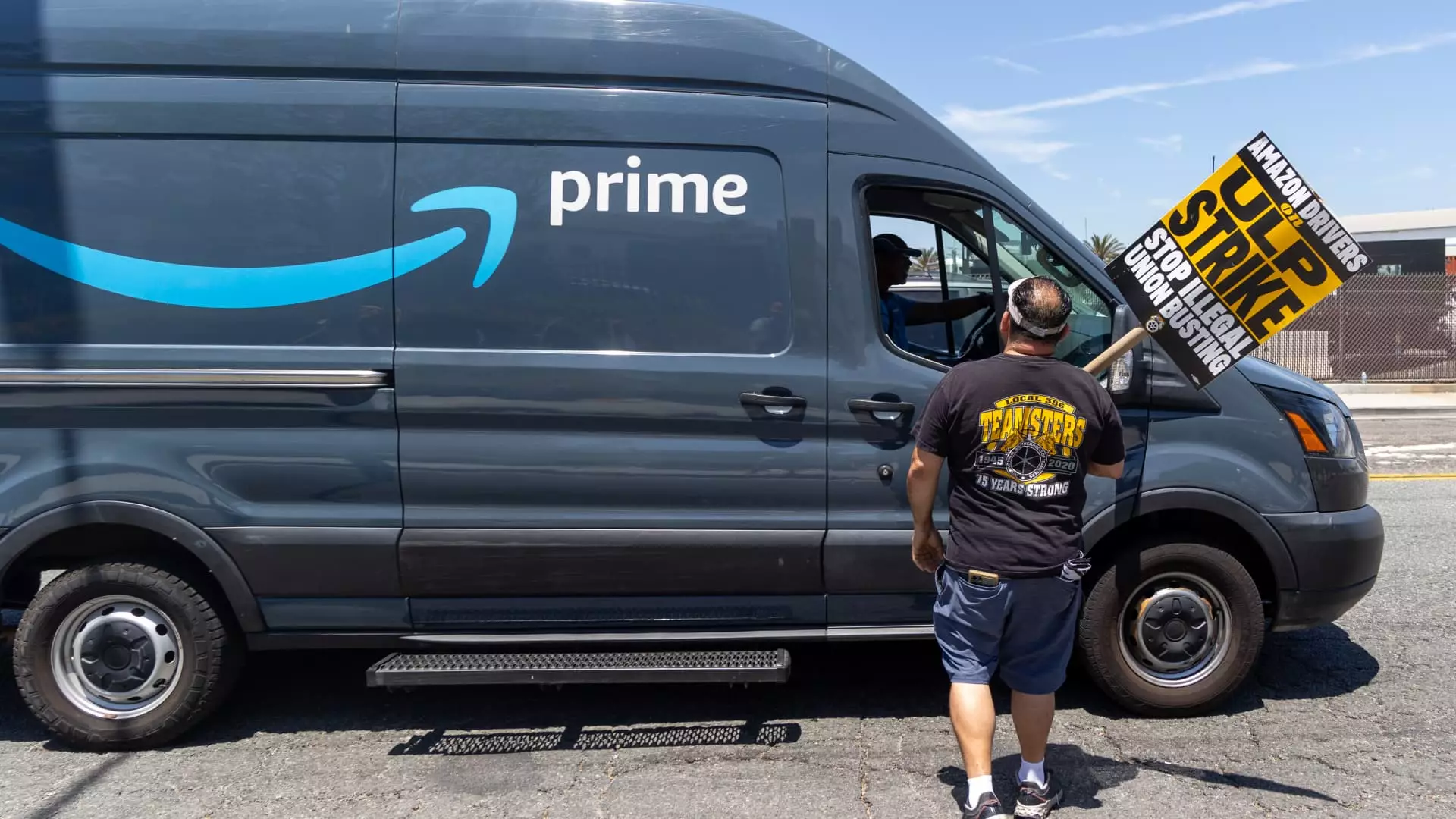Amazon has faced growing scrutiny over its treatment of contracted delivery drivers, with the National Labor Relations Board (NLRB) taking a closer look at the company’s practices. A regional director for the NLRB recently stated that Amazon should be considered a “joint employer” of some of its contracted delivery drivers, specifically those working at an Atlanta warehouse known as DAT6. This decision comes after two unfair labor practice charges were filed in January, highlighting concerns regarding Amazon’s treatment of drivers at the facility.
While Amazon has traditionally hired third-party drivers to manage its increasing volume of deliveries, the NLRB’s regional director found evidence that Amazon jointly employed drivers at the DAT6 site who were working for a contractor called MJB Logistics. This finding is significant as Amazon has actively sought to avoid being classified as a joint employer of the numerous contracted delivery companies it works with. Critics, including lawmakers and labor groups such as the Teamsters union, argue that Amazon exerts significant control over these drivers, evident in the Amazon-branded uniforms they wear, the Amazon-branded vans they drive, and the company’s influence over their schedules and performance expectations.
The NLRB’s determination that Amazon is a joint employer of some contracted delivery drivers could have far-reaching implications for the company. It may now be required to engage in bargaining with employees who are seeking to unionize, a move that could potentially strengthen workers’ rights and protections within Amazon’s delivery network. This announcement follows a similar ruling by an NLRB official last month, which concluded that Amazon is a joint employer of subcontracted drivers at a facility in Palmdale, California.
The Teamsters union has been actively involved in organizing Amazon delivery and warehouse workers, establishing an Amazon division in 2021 to provide support and resources for workers seeking to unionize. In response to alleged anti-union actions by Amazon, including the cancellation of contracts with drivers who voted to unionize, the Teamsters have further intensified their efforts to protect workers’ rights within the company. This has included leading strikes at Amazon facilities and facilitating affiliations with labor groups, such as the one at an Amazon warehouse in New York’s Staten Island.
In addition to the joint employer status, the NLRB’s recent determinations pointed to allegations of coercive behavior by Amazon towards drivers in Atlanta. These included threats of site closure if drivers unionized, the making of coercive statements, and actions that gave the impression of surveillance at the facility. These allegations further underscore the challenges faced by workers seeking to exercise their labor rights within Amazon’s delivery network.
It is important to note that the NLRB’s determinations in Atlanta and Palmdale are not final decisions but rather the initial steps in addressing the allegations outlined in the unfair labor practice charges. If the parties involved do not reach a settlement, a hearing will be scheduled with an NLRB judge to further investigate the claims. Both Amazon and the drivers have the right to appeal the judge’s decision to the NLRB board and, subsequently, to federal court, indicating that the legal battle over Amazon’s treatment of contracted delivery drivers is far from over.

